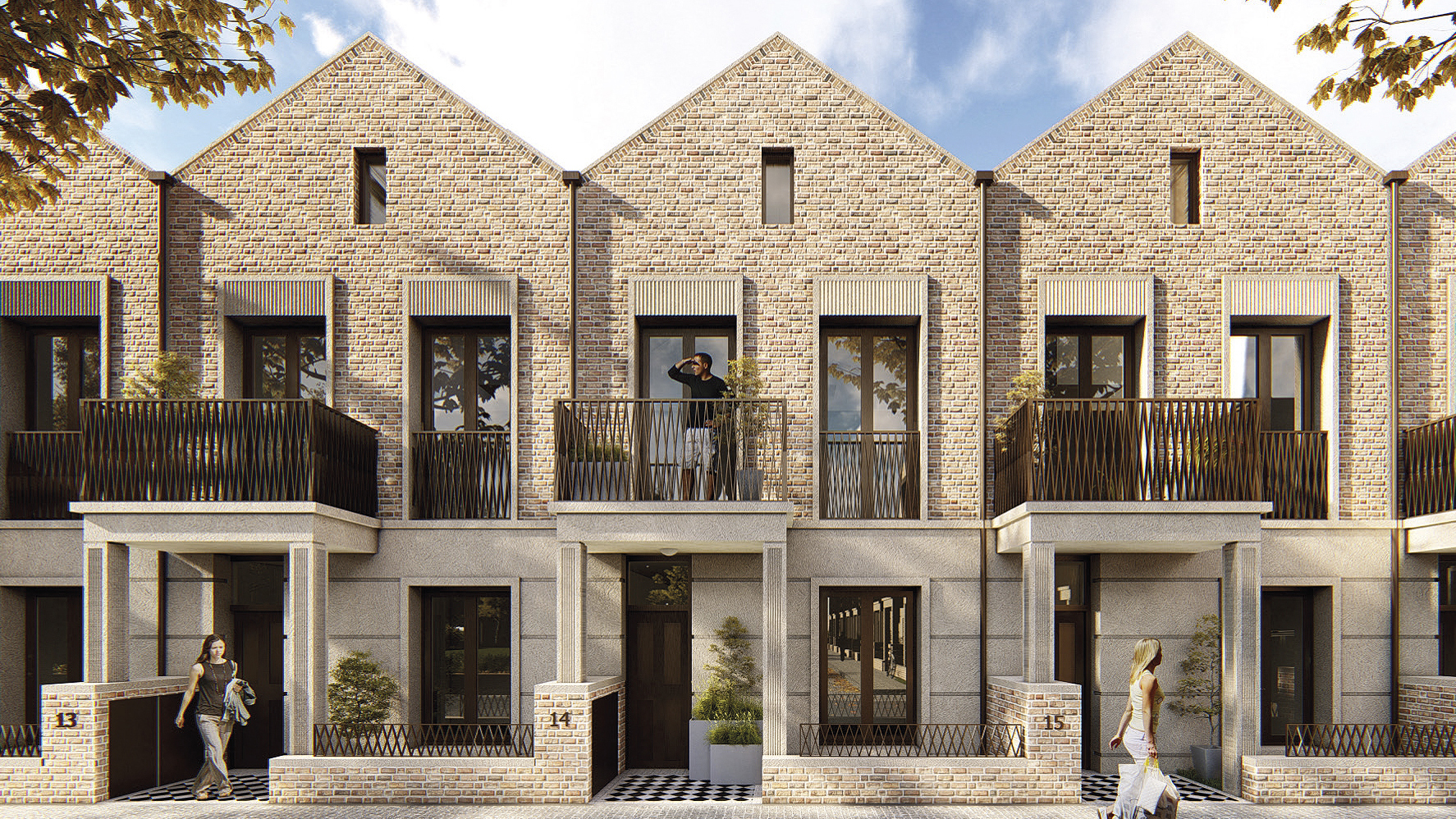

Your new build can have a low carbon footprint with these eco-friendly homes
Eco-friendly homes sound great in theory, but what do they actually constitute? If you’re intrigued by buzzwords like LEED-certified, solar paneled, or prefab, but have no clue what they actually mean, you’re not alone.
In the world of green building, there are a lot of varying standards and costs. To build a home that is easy on the environment — and your wallet — we’ve demystified every eco-friendly home type.
- See also: The best eco-friendly building materials
Prefab homes
If you want to build new while going green, prefab homes are a great option. They are built off-site in a factory and then shipped to you for installation and assembly. While most companies offer a host of personalization options, the standardized format of prefab modular designs cuts down on waste.
And, cutting waste can also cut costs. The average modular home costs between $80 and $160 to install (well below the normal average for a new house build). They require fewer permits and can be built more quickly with less waste. Often confused with tiny homes, prefab models can be built quite small, but they can also be crafted as luxurious, 6-bedroom-plus estates.
One of the drawbacks to prefab homes is that you can be limited when it comes to personalization options within a general floor plan, but today’s market has an array of house styles and layouts to choose from.
LEED-certified homes
LEED stands for Leadership in Energy and Environmental Design. LEED-certified homes have been verified by a third-party system to use less energy and fewer resources, and to be healthier for the families who inhabit them. How so? These builds are designed to provide clean indoor air and ample natural light.
First and foremost, LEED-certified homes are well built. They are designed to withstand catastrophic weather. They also use safe building materials designed to maximize indoor fresh air and minimize exposure to toxins and pollutants. These houses also have systems to reduce water and energy consumption. A bonus for your monthly bills, LEED-certified homes use 20 to 30 percent less energy on average. With the right planning, these homes can be built at the same cost as non-green homes, and many states offer attractive tax incentives.
If you want to go LEED, be sure to choose a contractor who is familiar with the requirements. Getting certified is a rigorous process that can be overwhelming for first-time buyers.
Solar paneled houses
Rooftop solar panels can be easy to spot, but there is more to a solar home. Solar homes most commonly refer to houses with rooftop photovoltaic (PV) panels or a ground-mounted solar system. These systems generate usable electricity from the sun, and in some cases, they can generate enough for a home to produce enough electricity to go completely off the grid. However, many solar-paneled houses have hybrid systems that rely on the city electrical grid to supplement solar energy.
Most homes that you see with solar panels are building attached, which means they are retroactively added to the house. However, new builds or gut renovations can include building-integrated photovoltaics (BIPV) which uses solar energy to directly power home operations. Both options offer significant financial benefits and reduced utility costs.
The biggest drawback to solar panels is their bulky, and often unattractive appearance. Though expensive options like the Tesla Solar Roof look like standard roof tiles but boast sneaky solar integration.
Biophilic homes
Unlike more technical housing types (like prefab or LEED-certified), biophilic homes refer to an architectural/style concept. The idea is to increase the occupant’s connection to their natural environment. This can involve orienting the home to take in a water view, increase windows and natural light, developing natural sustaining landscapes, or bringing vegetation indoors.
Though the term has been coined in recent years, instances of biophilic design have been seen in architecture as early as the Hanging Gardens of Babylon. The biggest benefit to this concept is that you don’t need to invest in an entire rebuild to enjoy the benefits. Start with a green wall or install a fireplace.
Earth covered homes
Earth-sheltered or earth-covered homes are, as their name suggests, build underground. Most have an atrium design to offer windows and glass doors, while the majority of the house is below the surface. This allows the home to be less susceptible to weather and environmental factors, therefore more affordable to heat and cool. Prefer quiet? They are also relatively sound proof.
The house styles have a unique design, and their specifications can come with increased costs to build. There is also a bit more upkeep involved with maintaining proper moisture levels. Due to these hurdles, earth-covered homes can be more difficult to sell, but the payoff is big for the right buyer.
Not ready to invest in an earth-covered home for your primary residence? Green Magic Homes builds biophilic vacation properties that are shrouded in soil and greenery. They are built with modular components to be completely waterproof. The company has already smoothed out any kinks in the process, so these structures can be built quickly with futuristic designs meant to be one with the outdoors.
Passive homes
Passive homes employ solar power, but there is a lot more to them. The goal is to get the homeowner to (or as close as possible to) net zero, meaning the house completely powers itself and does not rely on the outside grid. Like LEED-certified homes, Passive Homes are certified to meet a set of building standards. In the U.S., Passive Homes are certified by the Passive House Institute (PHI).
To achieve the goal of net zero, passive builds rely on impressive insulation. They employ high-performance windows and doors that retain heated or air conditioned air. They also use some form of balanced heat and moisture-recovery ventilation as well as a minimal space conditioning system. These principals can be applied to any type of building design — from tiny homes to sprawling estates and even skyscrapers.
If you’re thinking about building a passive home, it is best to opt for a contractor that is familiar with this kind of superinsulated design, since these specifications can be tricky (and expensive) to navigate.
How to find a green builder
The challenge to eco-friendly homes is that there are no “certified builders,” only certified homes. Searching for a “green builder” in your region can help narrow the pool to those who are marketing themselves as ecologically conscious. From there, ask them if they have built the type of home you are looking for before, or if they have achieved Passive Home or LEED-certified status on their projects.
If you aren’t prepared to invest in a new build or gut renovation, ask what elements of these eco-friendly homes can be incorporated into your existing floor plan. It can be as easy as installing solar panels, replacing inefficient windows, or building a green wall.
Our guide on how to find a good builder can also help you choose the right tradesperson for the job.
Join our newsletter
Get small space home decor ideas, celeb inspiration, DIY tips and more, straight to your inbox!
After serving as an editor for luxury publications for nearly a decade, Ann Loynd Burton struck out on her own as a freelance writer covering design and lifestyle. Along with her work highlighting decor trends for Real Homes, Loynd Burton has covered interiors for such publications as Apartment Therapy, Aspire, Cottages & Gardens, and Galerie.
-
 9 affordable, sustainable prefab homes you can buy in 2021
9 affordable, sustainable prefab homes you can buy in 2021These eco-friendly prefab homes offer flexible living that is easy on the planet...and your wallet
By Ann Loynd Burton
-
 The modular homes that are promising to end the UK housing crisis – at the rate of 8 new homes per day
The modular homes that are promising to end the UK housing crisis – at the rate of 8 new homes per dayA newcomer to the UK's pre-fab property sector is aiming to close the house building gap at the rate of 2,000 new precision engineered homes a year
By Anna Cottrell